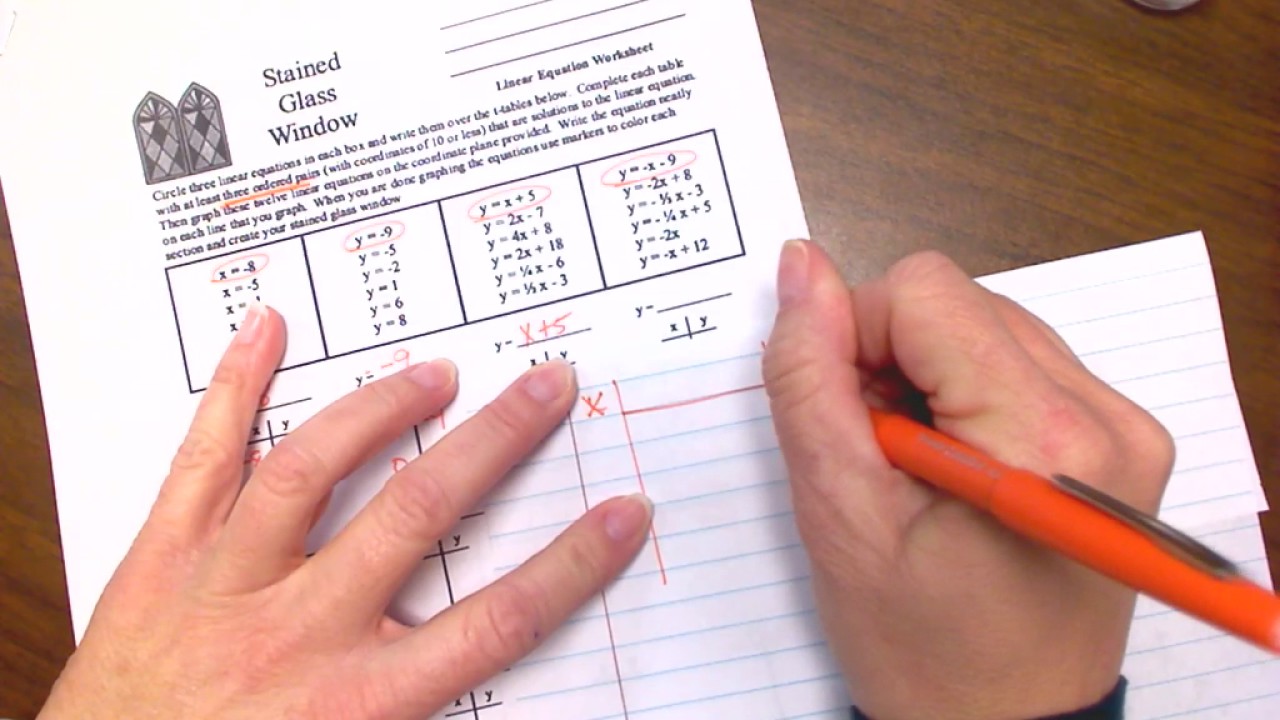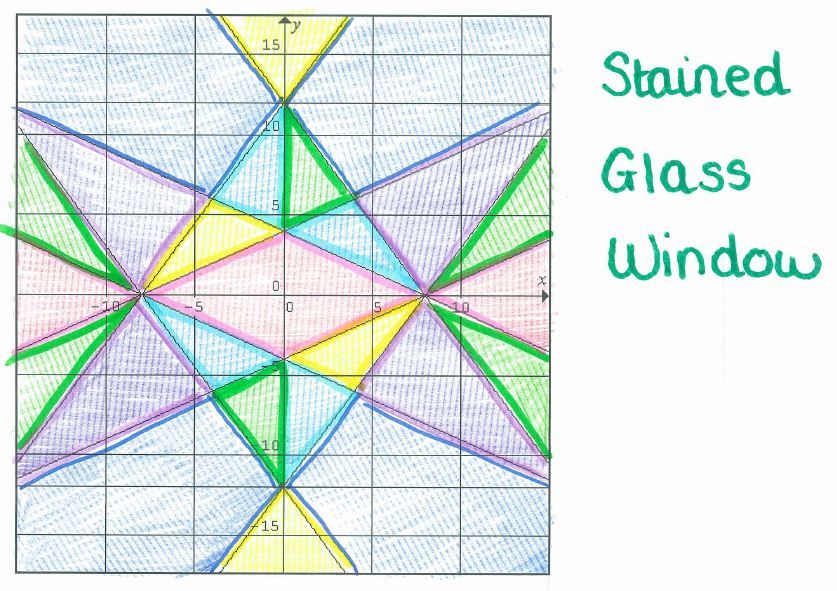Stained glass window math projects are excellent ways to learn about geometry and fractions. They combine art and mathematics. An answer key helps to verify the calculations.
Understanding the Basics
Geometry provides the foundation. We will look at shapes such as triangles, squares, and circles. Fractions are essential for calculating the area of each shape within the window.
Area is the amount of space inside a two-dimensional shape. Each shape will have its area. We need to calculate this to find the proportion of each color.
Area Formulas
The area of a square is side times side. If a square has a side length of 5 cm, the area is 5 cm * 5 cm = 25 cm². Remember that the units are important.
The area of a rectangle is length times width. If a rectangle is 8 cm long and 3 cm wide, the area is 8 cm * 3 cm = 24 cm². Make sure both measurements are in the same units.
The area of a triangle is one-half times base times height. If a triangle has a base of 6 cm and a height of 4 cm, the area is (1/2) * 6 cm * 4 cm = 12 cm². The height must be perpendicular to the base.
The area of a circle is pi times the radius squared. The radius is the distance from the center to the edge. The value of pi is approximately 3.14. If a circle has a radius of 2 cm, the area is 3.14 * (2 cm)² = 3.14 * 4 cm² = 12.56 cm².
Working with Fractions
Fractions represent parts of a whole. In our project, fractions show how much of the window each color occupies. It is essential to understand how to work with fractions.
First, calculate the total area of the stained glass window. Then, find the area of each colored section. Divide the area of each color by the total area.
This gives you the fraction representing that color's proportion of the window. For example, if a window has a total area of 100 cm², and a blue section has an area of 25 cm², the fraction representing blue is 25/100, which simplifies to 1/4.
Simplifying Fractions
Always simplify fractions to their lowest terms. To simplify, find the greatest common factor (GCF) of the numerator and denominator. Divide both by the GCF.
For example, the fraction 20/30. The GCF of 20 and 30 is 10. Divide both by 10 to get 2/3. The simplified fraction is 2/3.
To convert a fraction to a percentage, divide the numerator by the denominator. Multiply the result by 100. This shows the proportion as a percentage.
The Answer Key
An answer key provides the correct answers to all the calculations. It includes the area of each shape. It also contains the fractional representation of each color.
The answer key is a tool for verification. Students can check their work. They can identify mistakes. It helps learn from errors.
An answer key might look like this: * Total Window Area: 200 cm² * Red Area: 50 cm², Fraction: 1/4 * Blue Area: 75 cm², Fraction: 3/8 * Green Area: 75 cm², Fraction: 3/8
Using the Answer Key Effectively
Do not simply copy the answers from the key. Instead, try to understand each step. Compare your approach. See where you made a mistake.
If your answers don't match the key, review your calculations. Check your area formulas. Make sure you simplified the fractions correctly.
If you still can't find the error, ask for help. Your teacher or a classmate can provide assistance. Understanding the process is most important.
Example Project
Imagine a stained glass window project with a total area of 300 cm². The window contains one square, two triangles, and a circle.
The square has a side length of 6 cm. The triangles have a base of 8 cm and a height of 5 cm each. The circle has a radius of 4 cm.
Let's calculate the areas: * Square Area: 6 cm * 6 cm = 36 cm² * Triangle Area (each): (1/2) * 8 cm * 5 cm = 20 cm² * Circle Area: 3.14 * (4 cm)² = 3.14 * 16 cm² = 50.24 cm²
The total area covered by these shapes is 36 cm² + (2 * 20 cm²) + 50.24 cm² = 36 cm² + 40 cm² + 50.24 cm² = 126.24 cm².
If the square is red, the triangles are blue, and the circle is green, the fractions are: * Red: 36/300 = 3/25 * Blue: (2 * 20)/300 = 40/300 = 2/15 * Green: 50.24/300 = Approximately 0.1675
To confirm these calculations, an answer key would provide these values. It helps you verify your work.
Practical Applications
Understanding geometry and fractions is useful beyond this project. They are used in architecture and design. They also appear in engineering.
Architects use geometry to design buildings. They use fractions to determine proportions. Interior designers use these concepts to plan spaces.
Engineers use area calculations to design structures. Knowing how to work with fractions is essential for accurate measurements. The stained glass window math project is a solid foundation.

